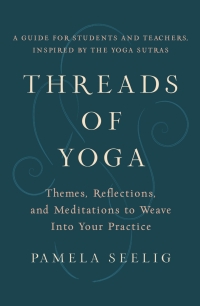In Search Of Your True Nature
Often I begin class with a centering meditation and a reminder that, according to the ancient Yoga Sutras,
-Yoga is the quieting of the mind (book 1, sutra 2)
-Then the seer abides in her true nature (book 1, sutra 3)
One student in class today asked (rather loudly :), “What’s that? What’s our true nature?” Well, that’s a fundamental and beautiful question for which the only answer I know is; “practice yoga and experience it for yourself.” That is the purpose of yoga - to abide in our true nature and experience who we truly are. Deep, right?
Words can attempt to describe our true nature, but just as words attempt to describe chocolate, at some point you have to actually taste chocolate to get it. Some things have to be experienced - you can’t study hard to find out, you can only experience your true nature through your own mind/body.
When we quiet the mind, the part of us that resides behind the thoughts and is referred to as awareness, consciousness or attention comes forward. It is a constant, peaceful presence, although a behind-the-scenes presence most of the time. Accessing this awareness is no small thing. This can be done simply by bringing your attention away from the thoughts and focusing on the breath. Try this quick meditation: inhale through the nose and feel the ribs expand, relax on the exhale. The thoughts will come in but ignore them and feel the deep inhale and the full exhale. What is focusing on the breath and trying to ignore thoughts is awareness. The practice of yoga teaches us how to hold onto that state of awareness, keep it in the forefront, and ignore the thought stream.
Working with awareness may seem minor, but it’s a major step on the path toward enlightenment, or just on the path to not being subject to the mad workings of the mind! As the yogis say, the mind is a wonderful servant but a terrible master. If we have no mastery over the mind, we are at the mercy of the mind’s every depressing and anxiety-ridden whim.
Once we connect to the deeper aspect within us, we can begin to allow that peaceful part of ourselves to have a larger presence in our lives. We begin to recognize that the awareness or consciousness within us is the same consciousness in others. We can see and feel that everything is connected and everything is consciousness.
But how is this yoga? Most people consider yoga a series of physical, bendy postures. Getting back to the Yoga Sutras, they not only explain that yoga is the quieting of the mind, but also provide the 8 practices that lead to a quiet mind. This is also known as the 8-limbed path or classical yoga. One of those limbs is asana or physical postures. When we practice asana, we are training ourselves to quiet the mind while also enjoying many other health benefits. This one limb, asana, has captivated the western world even though it is just one part of the treasure that is yoga.
Yoga practitioners now are seeking more information about how and why yoga works. Fortunately, Patanjali, the author of the Yoga Sutras, kindly provided many of the answers around 2000 years ago. My upcoming book, Radiant Yoga, delves into how this physical practice works with and transforms the deeper aspects of our being. Stay tuned for future blogs where we’ll explore the other 7 limbs - you’ll be amazed!

